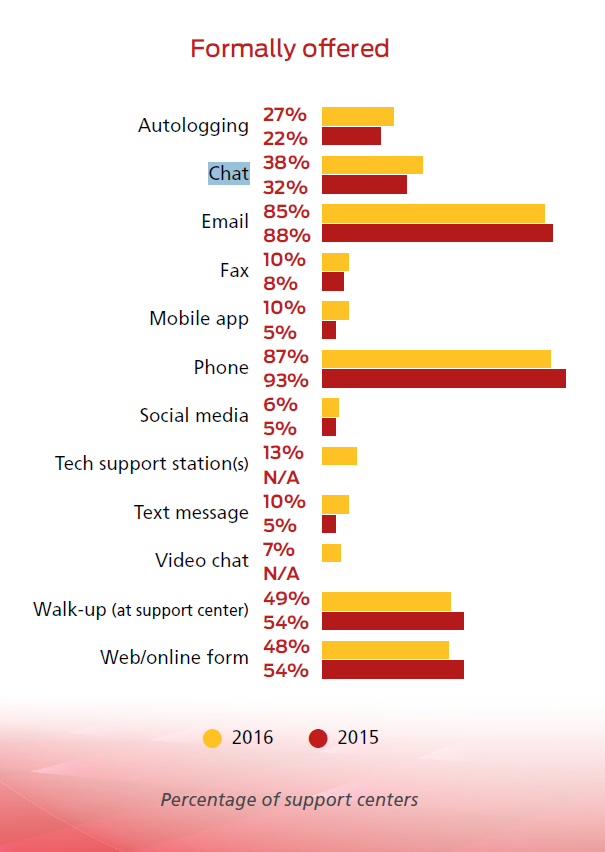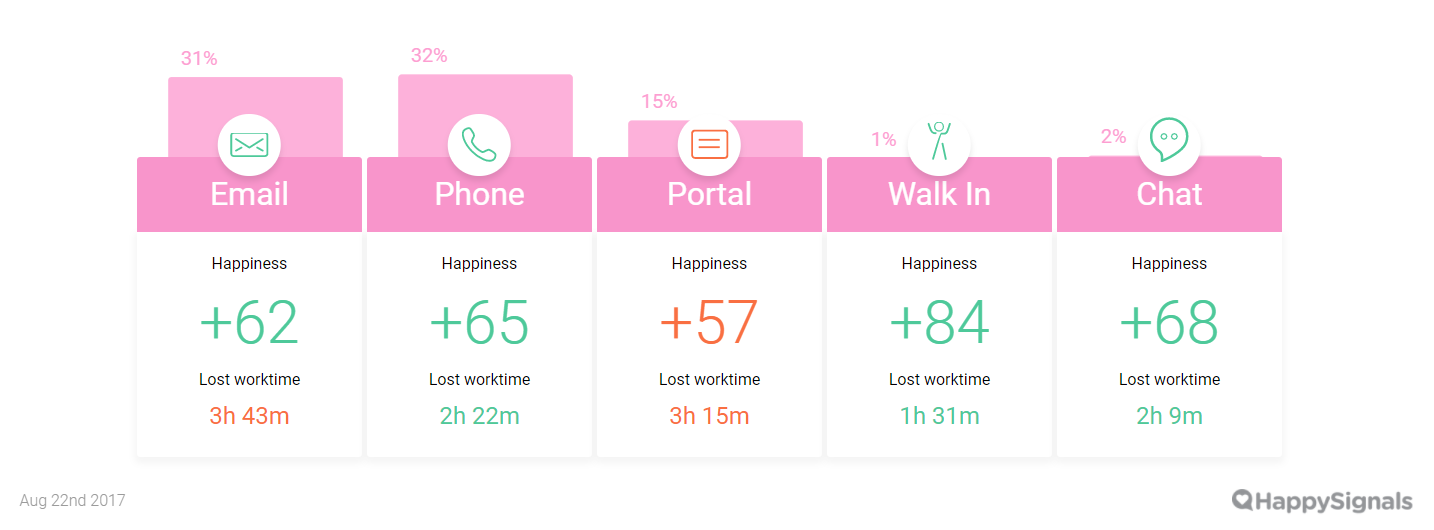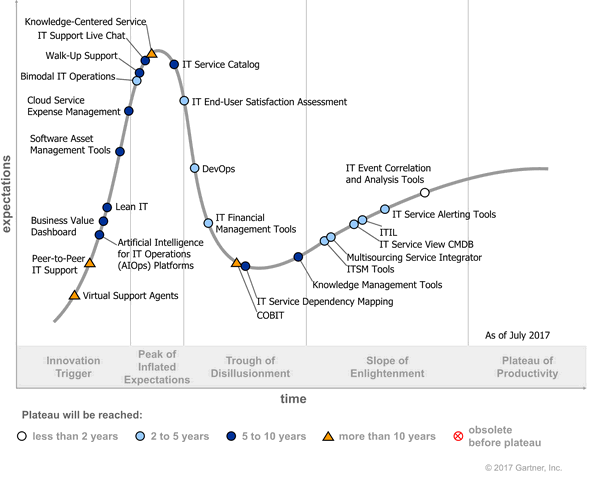EV Blog
Benoit Tessier | September 26, 2017
Walk-Up Support at the IT Service Desk. In 2017? Yes, really!
There’s an IT service management (ITSM) industry phrase that seems to get used every time something new and sexy is added to ITSM tools – “It’s not your grandfather’s IT service desk.” Notwithstanding the fact that there were no IT help desks, let alone service desks, in my grandfather’s day, it paints a picture of “olden-day” IT support as being an inferior version of what we have now. That new thinking, ways of working, and technology-delivered capabilities, and – more recently – consumerization have improved end-user-focused IT support from its 1980’s origins.
But let’s not throw the baby out with the bathwater as we strive to improve the IT service desk. Or perhaps we already have when it comes to one facet of “olden-day” IT support – the “walk-up” support channel.
As we add innovations like automation and self-service to our ITSM arsenals for improved customer experiences, cost-savings, and lighter service desk workloads, we have to ask ourselves: Are there improvements to be made to more traditional forms of support? This blog looks at the current use of walk-up support and whether IT departments are missing a big opportunity by overlooking one of the earliest IT support channels.
The current state of the IT support walk-up channel
The latest HDI data – from its “2016 Technical Support Practices & Salary Report” – shows that half of support centers still formally offer a walk-up channel, third only to phone and email channels.
Channels Used to Contact Support

Source: HDI, “2016 Technical Support Practices & Salary Report”
However, the use of walk up by end users is disproportionately low, as shown in the Happy Signals data below, with only 1% of employee experience feedbacks related to the “walk-in” channel:
Employee Experience by Channel

Source: Happy Signals
This data also shows the “walk-in” channel behind self-service and chat in terms of adoption volumes.
As to why this is, there are a number of potential reasons:
- The formal walk-up channel is probably less formal than thought (in terms of the investment in it and the attention paid to, and efficiency for, end users wishing to use it)
- The walk-up channel might not be promoted, or even marketed, as much as it could be
- End users might be steered away from walk up to other remote-assistance channels based on staff availability and cost (or other reasons)
- End users might have had a bad experience with walk up and declined to use it again.
There are of course potentially other root causes, but it’s worth using the above Happy Signals diagram to query the last potential reason in the list – that end users might have had a bad experience with walk up.
The walk-up channel and end-user experience
It’s logical that if an end user has a bad experience with an IT-support channel, then they are highly unlikely to use it again. Instead using something that has worked well for them previously, such as the telephone channel.
However, according to the Happy Signals’ data above, this isn’t the case with walk up; with “walk in” having the best employee experience feedback of all the listed IT support channels:
- At a happiness level of +84, it’s miles ahead of the other channels, with chat second with +68 and self-service last with +57
- End users lose less time with walk in than through using any other formal support channel, with only one hour and 31 minutes lost (compared to two hours and 22 minutes via what would otherwise be assumed to be the quickest route, telephone).
So, we have a paradox – walk up is commonly offered, infrequently used, but delivers by far the best employee experience. It just doesn’t make sense if it’s being given equal attention as an available IT-support channel.
Making more of the walk-up channel
While walk up might feel like an olden-day IT service desk channel – with it since superseded by email, self-service, chat, social media, and peer-to-peer support mechanisms – it’s definitely not “dead in the water.”
First, there’s Apple’s growing reliance on walk up via its in-store Genius Bars that seem to cater for more and more people. Then, there’s the recent Gartner Hype Cycle for ITSM, 2017 – which includes Walk-Up Support in the “Peak of Inflated Expectations.”
Hype Cycle for ITSM, 2017, Gartner

Source: Gartner Hype Cycle for ITSM, 2017, Rich Doheny, 19 July 2017
Gartner does not endorse any vendor, product or service depicted in its research publications, and does not advise technology users to select only those vendors with the highest ratings or other designation. Gartner research publications consist of the opinions of Gartner's research organization and should not be construed as statements of fact. Gartner disclaims all warranties, expressed or implied, with respect to this research, including any warranties of merchantability or fitness for a particular purpose.
The Gartner report also calls out some of the potential reasons for the low uptake of walk up:
- The offered capabilities are still commonly ad hoc – ultimately being “best endeavors” rather than providing the consistency, and meeting the service level targets, of other IT support channels.
- Inadequate marketing and promotion – where the facility is unfortunately a “best-kept secret” for those lucky enough to stumble across it.
- IT departments are still focused on cost savings over end-user experience.
All of which are valid. But ultimately, walk up needs to be considered as something new, and hopefully reimagined, to truly be successful. And, in addition to dealing with the above three issues, there needs to be:
- An investment in organizational change management – to explain the what, why, and how of the change to established ways of working, plus the “what’s in it for me?” Then there needs to be sufficient communication and education, from planning through to post-go-live.
- Suitable IT support people – it’s a human-to-human interface after all and, as such, people skills will definitely be needed.
- A suitable location (or locations) – that are easy to find and access, allow IT service desk personnel to work unhindered, and where possible allow end users to use their time wisely if they plan to wait. So, for example, this could be an “IT callers’ office” equipped with communal PCs upon which end users can work in some capacity. Or a location next to the company restaurant or meeting rooms such that end users can do something productive (or at least useful), and still be on hand, while they wait.
- A regular cadence – such that end users know when the walk-up capability is available. This might start as every Tuesday and Thursday morning, and grow in line with demand and end-user feedback.
- Best practices processes that ensure each issue or request is treated efficiently, with the ability to escalate when needed as with any other IT support channel.
So, is it time to augment your traditional service desk support and look at the walk-up opportunity within your organization? If you already offer the channel, then are you making the most of it? If you don’t, then perhaps you should give it a try – your end-users might love you more for it.
Subscribe to Email Updates
Benoit Tessier
Benoit Tessier, EasyVista Director of Product Marketing, is an IT veteran with 20+ years of professional IT Service Management experience. He has extensive knowledge on process implementation and technical integrations, and has presented at ITSM conferences around the world. In this role, he helps lead the marketing direction and strategic vision for EasyVista’s services and solutions.



